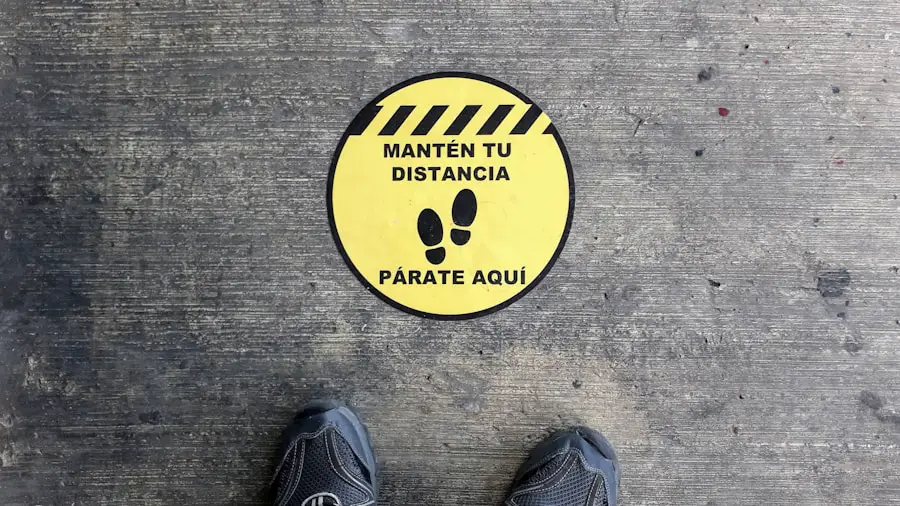Footwear plays a pivotal role in the realm of running, serving as the primary interface between the runner and the ground. The right pair of shoes can significantly enhance performance, provide comfort, and reduce the risk of injury. Running shoes are specifically designed to accommodate the biomechanics of running, offering features such as cushioning, arch support, and breathability.
These elements work together to absorb impact, stabilize the foot, and promote a natural running gait. Conversely, inadequate footwear can lead to a host of problems, including blisters, calluses, and more serious injuries like stress fractures or tendonitis. Moreover, the terrain on which one runs also dictates the type of footwear required.
Trail running, for instance, demands shoes that offer superior grip and protection against rocks and roots, while road running typically requires lighter shoes with more cushioning. This specificity underscores the importance of selecting appropriate footwear tailored to the running environment. As runners become more aware of their individual needs—such as foot shape, running style, and personal preferences—they can make informed choices that enhance their overall experience and performance.
Key Takeaways
- Proper footwear is crucial for running to prevent injuries and improve performance
- Hiking boots are designed for stability, support, and protection on rough terrain
- Hiking boots can impact running technique by altering stride and foot placement
- Running in hiking boots can increase the risk of blisters, ankle sprains, and discomfort
- When running in hiking boots, focus on shorter distances and slower paces to minimize risks
Characteristics of Hiking Boots
Robust Construction for Stability
One of the most notable features is their stiff sole, designed to provide stability on uneven surfaces. This rigidity helps prevent ankle sprains and offers support during descents or when navigating rocky paths.
Enhanced Support and Protection
Hiking boots typically feature a higher cut around the ankle, which further enhances support and protection against debris and moisture. The material used in hiking boots is also a key characteristic. Many are crafted from durable leather or synthetic materials that offer water resistance and breathability. This combination ensures that feet remain dry and comfortable during long hikes in varying weather conditions.
Traction and Durability
Furthermore, hiking boots often come equipped with aggressive tread patterns on the outsole, providing traction on slippery or loose surfaces. This design is crucial for maintaining grip while traversing steep inclines or descending rocky trails. The overall construction of hiking boots prioritizes durability and protection over lightweight design, making them ideal for long-distance trekking but potentially less suited for the dynamic movements involved in running.
Impact of Hiking Boots on Running Technique

When it comes to running in hiking boots, the impact on running technique can be significant. The inherent stiffness of hiking boots can alter a runner’s natural gait. Unlike running shoes that allow for a more flexible foot movement, hiking boots restrict the foot’s ability to flex and adapt to the ground’s contours.
This restriction can lead to a less efficient stride, as runners may find themselves expending more energy to compensate for the lack of flexibility in their footwear. Additionally, the weight of hiking boots can affect overall speed and endurance. Most hiking boots are heavier than traditional running shoes due to their robust materials and construction.
This added weight can lead to increased fatigue over longer distances, as runners may struggle to maintain their pace. Furthermore, the elevated heel height commonly found in hiking boots can alter a runner’s center of gravity, potentially leading to an unnatural running posture. This shift can result in increased strain on the knees and hips, further complicating an already challenging endeavor.
Potential Risks of Running in Hiking Boots
| Potential Risks | Description |
|---|---|
| Blistering | Friction from ill-fitting boots can cause painful blisters on the feet. |
| Ankle Sprains | Hiking boots with poor ankle support can increase the risk of ankle sprains on uneven terrain. |
| Foot Fatigue | Heavy hiking boots can lead to foot fatigue and discomfort on long hikes. |
| Decreased Agility | Bulky hiking boots can reduce agility and make it harder to navigate challenging terrain. |
| Increased Weight | Heavy boots can add unnecessary weight, leading to increased energy expenditure. |
Running in hiking boots is not without its risks. One of the primary concerns is the potential for injury due to inadequate cushioning and support. While hiking boots are designed for stability on uneven terrain, they often lack the shock-absorbing properties found in dedicated running shoes.
This deficiency can lead to increased impact forces on the joints during running, raising the likelihood of injuries such as shin splints or plantar fasciitis. Moreover, the rigid structure of hiking boots can contribute to blisters and hot spots on the feet. The lack of flexibility may cause friction between the boot and the foot, especially during longer runs where movement is more pronounced.
This friction can lead to painful blisters that not only hinder performance but may also require time off from running for recovery. Additionally, if a runner is accustomed to the lightweight feel of running shoes, transitioning to heavier hiking boots may result in muscle fatigue or strain as the body adjusts to the different demands placed upon it.
Tips for Running in Hiking Boots
For those who find themselves needing to run in hiking boots—whether due to unforeseen circumstances or personal preference—there are several tips that can help mitigate some of the challenges associated with this choice. First and foremost, it is essential to ensure that the boots fit properly. A snug fit without excessive tightness is crucial; this helps prevent blisters while allowing for some movement within the boot.
Runners should also consider wearing moisture-wicking socks designed to reduce friction and keep feet dry. Another important tip is to start with shorter distances when transitioning to running in hiking boots. Gradually increasing mileage allows the body to adapt to the different mechanics involved in running with stiffer footwear.
Additionally, focusing on maintaining proper form is vital; runners should pay attention to their posture and stride to minimize strain on their joints. Incorporating strength training exercises targeting the legs and core can also help build resilience against potential injuries associated with running in less-than-ideal footwear.
Alternative Footwear Options for Running

While hiking boots may serve a purpose in certain situations, there are numerous alternative footwear options specifically designed for running that can enhance performance and comfort. Trail running shoes are an excellent choice for those who enjoy off-road running; they offer a balance between cushioning and grip while maintaining flexibility for natural foot movement. These shoes often feature reinforced toe caps for protection against rocks and roots while providing adequate traction on various surfaces.
For road runners, traditional running shoes remain a popular option due to their lightweight design and advanced cushioning technologies.
Brands like Nike, Adidas, and Brooks have developed models that cater to different foot shapes and running styles, ensuring that runners can find a shoe that meets their specific needs. Additionally, minimalist shoes have gained popularity among some runners who prefer a more natural feel while still providing essential protection from the ground.How to Choose the Right Hiking Boots for Running
Choosing the right hiking boots for running requires careful consideration of several factors. First, it is essential to assess foot shape and size; many brands offer different widths and sizes to accommodate various foot types. Trying on multiple pairs is advisable to find a boot that feels comfortable without being overly restrictive.
Next, consider the intended use of the boots. If they will primarily be used for running on trails or uneven surfaces, look for features such as a flexible sole and adequate cushioning that can provide some shock absorption while still offering stability. Additionally, pay attention to weight; lighter boots will generally be more suitable for running than heavier models designed solely for hiking.
Finally, evaluate the tread pattern on the outsole; deeper lugs will provide better traction on loose or slippery surfaces but may add weight. A balance between grip and weight is crucial for maintaining speed while ensuring safety during runs on challenging terrains.
Can You Run in Hiking Boots?
The question of whether one can run in hiking boots does not have a straightforward answer; it largely depends on individual circumstances and preferences. While hiking boots are not specifically designed for running and may present challenges such as reduced flexibility and increased weight, they can still be utilized in certain situations with caution. Runners should be aware of potential risks associated with this choice and take steps to mitigate them through proper fit, gradual adaptation, and attention to form.
Ultimately, while it is possible to run in hiking boots, those serious about their running performance would benefit from investing in footwear specifically designed for that purpose. The right pair of running shoes can enhance comfort, improve efficiency, and significantly reduce injury risk—factors that are crucial for anyone looking to enjoy a fulfilling running experience.
If you’re looking for gear that combines functionality with style for your outdoor adventures, you may also be interested in a scarf with a hidden pocket for travel. This innovative accessory allows you to keep your valuables safe while exploring new destinations. Check out terms and conditions for any products you purchase, including these merino wool travel socks that are odor-resistant and perfect for long hikes.
Love travel? Join Our Facebook Community For More Tips.
FAQs
Can you run in hiking boots?
Yes, you can run in hiking boots, but it may not be as comfortable or efficient as running shoes. Hiking boots are designed for stability and support on uneven terrain, not for the repetitive motion of running.
Are hiking boots good for running?
Hiking boots are not ideal for running due to their heavier weight, stiffer soles, and less cushioning compared to running shoes. Running in hiking boots may increase the risk of injury and discomfort.
What are hiking boots designed for?
Hiking boots are designed to provide support, stability, and protection for the feet and ankles during hiking and trekking activities. They are built to withstand rugged terrain and provide traction on uneven surfaces.
Can you hike in running shoes?
While it is possible to hike in running shoes, they may not provide the same level of support and protection as hiking boots. Running shoes are designed for forward motion on smooth surfaces, while hiking boots are designed for stability and durability on rough terrain.
What should I consider when choosing between hiking boots and running shoes?
When choosing between hiking boots and running shoes, consider the type of activity you will be doing, the terrain you will encounter, and the level of support and protection your feet and ankles will need. Hiking boots are best for rugged terrain and longer hikes, while running shoes are better for smooth surfaces and running activities.
